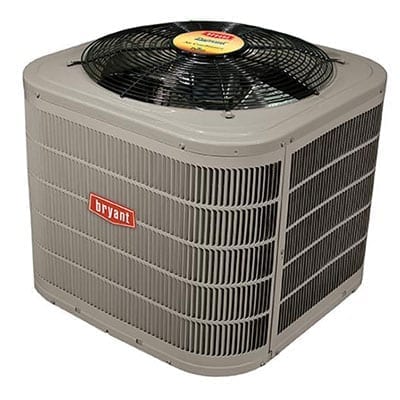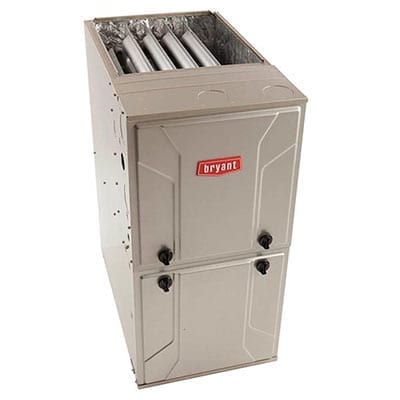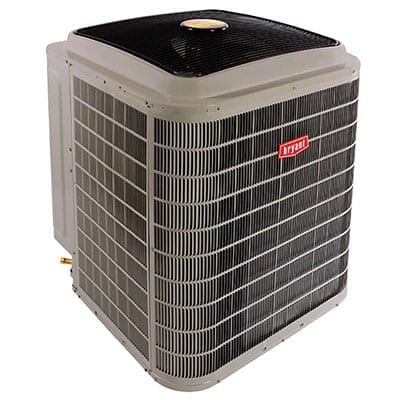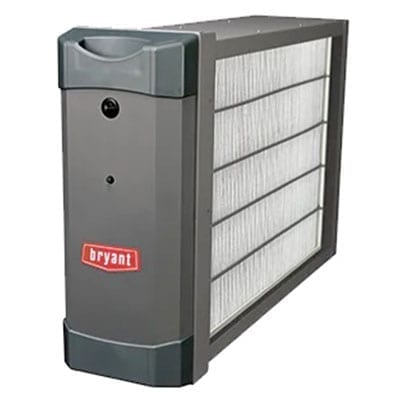Commercial HVAC for Physical Therapy Centers
Commercial HVAC systems are integral to maintaining optimal conditions in rehabilitation environments, such as physical therapy centers, rehab facilities, and care facilities, ensuring a comfortable and safe environment for patients and staff in these rehabilitation spaces. Understanding the importance of HVAC indoor units in these settings is crucial for efficient operations. Humidity control and refrigerant are key factors to consider. From regulating temperature and humidity in rehabilitation environments and care facilities to ensuring air quality in health care indoor units, HVAC systems directly impact patient comfort and recovery outcomes. Moreover, effective HVAC strategies in rehabilitation spaces are crucial for creating a conducive atmosphere for therapeutic activities. The right HVAC design is essential for providing reliable heating, ventilation, and air conditioning in care facilities. This blog post delves into the pivotal role of commercial HVAC systems in rehabilitation spaces and rehab facilities, highlighting their impact on patient well-being and operational efficiency in care facilities.
Impact of HVAC on Patient Recovery and Comfort
Enhanced Patient Comfort
Commercial HVAC systems are essential for maintaining optimal air flow and patient comfort in rehab facilities and care facilities during therapy sessions. The effective HVAC strategies implemented in health care facilities ensure proper temperature and humidity control, promoting the well-being of patients and creating a conducive environment for their health and comfort. For instance, maintaining an optimal temperature in physical therapy clinics ensures that patients are neither too hot nor too cold during their rehab sessions, contributing to their overall comfort in health care facilities.
Patients undergoing physical therapy often require a comfortable environment in rehab facilities to aid in their recovery process. These facilities provide specialized health care for patients who need assistance with their physical rehabilitation. With the help of well-regulated air quality through HVAC systems, rehab and health care facilities can ensure that patients in physical therapy centers breathe clean, fresh air. This is particularly crucial in health care facilities, as poor air quality can exacerbate respiratory conditions or allergies among patients undergoing rehab, hindering their progress. Proper HVAC design is essential to ensure a healthy environment.
The ability of commercial HVAC systems to maintain consistent airflow within health care facilities, such as physical therapy centers, is essential for creating a conducive environment for rehabilitation. By ensuring consistent airflow, these systems prevent stagnant or stuffy air from accumulating in health care treatment areas such as physical therapy clinics and rehab facilities. This not only contributes to patient comfort but also supports the effectiveness of various therapies in rehab by providing an optimal atmosphere for exercises and movements. Split systems in health care, such as split HVAC systems, play a crucial role in achieving this.
Faster Patient Recovery
The impact of commercial HVAC on patient recovery in rehab and health care cannot be overstated. The split system plays a crucial role in creating a conducive environment for healing. Properly regulated temperature and humidity levels in health care facilities significantly contribute to creating a favorable environment that aids in accelerating patient recovery processes in the split system. For example, when the ambient temperature is carefully controlled using HVAC systems, it prevents extreme heat or cold from affecting patients’ bodies during therapeutic activities.
Moreover, maintaining ideal humidity levels through a commercial split system HVAC helps prevent discomfort caused by excessively dry or damp conditions which could hinder the progress of patients undergoing physical therapy treatments. As a result, these factors collectively contribute towards fostering an environment where patients feel comfortable and supported throughout their recovery journey.
Role of HVAC Systems in Maintaining Rehab Facility Hygiene
Air Quality Improvement
Commercial HVAC systems for physical therapy centers play a crucial role in maintaining a clean and hygienic environment. These systems are designed to filter out airborne contaminants, ensuring that patients and staff breathe clean, healthy air. By removing dust, pollen, and other pollutants from the air, HVAC systems significantly reduce the risk of infections within the facility.
The efficient filtration capabilities of these HVAC systems help to create an environment conducive to patient recovery. For instance, individuals undergoing physical therapy may have compromised immune systems or respiratory issues. Therefore, having clean indoor air can contribute positively to their rehabilitation process by minimizing exposure to harmful particles.
Furthermore, with proper ventilation provided by commercial HVAC units, stale or contaminated air is continuously replaced with fresh outdoor air. This constant exchange helps eliminate odors and maintain a clean atmosphere essential for rehab facilities. Patients often require an environment free from unpleasant smells that could hinder their progress or comfort during treatment sessions.
It’s important to note that effective ventilation also aids in preventing the buildup of airborne bacteria and viruses within the facility. By constantly circulating fresh air while expelling stale indoor air laden with potential pathogens through exhaust vents, these HVAC systems contribute significantly to maintaining a safe and sanitary space for patients’ well-being.
Prevention of Contaminant Accumulation
Properly designed commercial HVAC for physical therapy centers prevents the accumulation of various pollutants such as dust mites, pet dander, mold spores among others which could impede patient progress during rehabilitation sessions. In addition to filtering out airborne contaminants mentioned earlier on this article’s previous section about “Impact of HVAC on Patient Recovery and Comfort”, commercial-grade heating ventilating and air conditioning (HVAC) system ensures that allergens are kept at bay which is particularly beneficial for patients who suffer from allergies or respiratory conditions.
Moreover,commercial-grade heating ventilating AC (HVAC) system maintains controlled humidity levels thereby inhibiting mold growth inside your rehab center’s building structure which would otherwise compromise both hygiene standards as well as indoor environmental quality.
Lastly,commercial-grade heating ventilating AC (HVAC) system keeps pests like insects away since they thrive best in warm environments hence making sure your rehab center remains pest-free.
Air Purification and Its Importance in Rehab Spaces
Efficient Removal
Commercial HVAC systems designed for physical therapy centers integrate advanced air purification technologies to efficiently remove harmful particles from the air. These technologies, such as HEPA filters and UV germicidal irradiation, work together to eliminate various contaminants, including dust, pollen, mold spores, and bacteria. As a result, the air circulated within rehab spaces is significantly cleaner and safer for patients undergoing treatment.
The high-quality air filtration provided by these specialized HVAC systems plays a crucial role in reducing the presence of allergens in rehab spaces. This is particularly important for individuals with respiratory conditions or sensitivities. By capturing and trapping airborne irritants, these filtration systems contribute to improved respiratory health among patients receiving physical therapy treatments. For instance, individuals with asthma can benefit from reduced exposure to common triggers like dust mites or pet dander due to the enhanced filtration capabilities of commercial HVAC units.
Disease Prevention
In addition to addressing allergens and irritants in the air, HVAC systems equipped with advanced air purification features play a significant role in minimizing the spread of diseases within rehabilitation spaces. By effectively eliminating airborne pathogens such as viruses and bacteria, these systems create an environment that is conducive to patient recovery while lowering the risk of cross-contamination between individuals seeking treatment at the facility.
-
Enhanced patient comfort: Clean indoor air quality contributes to a comfortable environment for patients during their rehabilitation sessions.
-
Improved staff productivity: By providing a healthier workspace through superior indoor air quality maintenance, staff members can maintain focus on delivering high-quality care without being compromised by poor environmental conditions.
-
Compliance with regulations: Integration of advanced air purification technologies helps physical therapy centers adhere to industry standards related to maintaining clean and safe environments for patient care.
Regular HVAC Maintenance for Uninterrupted Therapy Sessions
Importance of Regular Maintenance
Regular maintenance of commercial HVAC systems is crucial for physical therapy centers to ensure uninterrupted therapy sessions. By scheduling routine inspections and tune-ups, potential issues can be identified early on, preventing unexpected breakdowns during critical rehabilitative treatments. This proactive approach helps in maintaining optimal performance and temperature control within the facility, creating a comfortable environment for both patients and staff.
Timely filter replacements and cleaning routines are essential aspects of regular maintenance that contribute to improved system efficiency. Proper care and attention to the HVAC equipment’s components not only enhance performance but also extend the lifespan of the entire system. For physical therapy centers, where precise temperature control is vital for patient comfort during sessions, ensuring that the refrigerant, cooling mechanisms, outdoor units, and duct systems are operating at their best is paramount.
Scheduling periodic maintenance also plays a significant role in sustaining air purification efforts discussed in the preceding section. A well-maintained HVAC system effectively circulates purified air throughout the facility while regulating temperatures as necessary.
Preventing Disruptions to Therapy Sessions
Unexpected disruptions due to faulty HVAC systems can hinder therapeutic activities within a center. These interruptions may lead to discomfort among patients undergoing rehabilitation or create an unfavorable working environment for therapists and staff members. Through regular maintenance practices such as checking refrigerant levels or inspecting system equipment installations, potential malfunctions can be addressed before they escalate into major problems.
In addition to avoiding disruptions during therapy sessions, proper care of commercial HVAC systems contributes to cost savings by reducing energy consumption through optimized operation. When filters are regularly replaced and ducts cleaned as part of routine maintenance, airflow remains unobstructed; this reduces strain on the system equipment which leads to more efficient cooling mechanisms.
Designing HVAC Systems for Enhanced Physical Therapy Environments
Zoning Systems
HVAC design for physical therapy centers involves careful consideration of zoning systems. These systems allow different areas within the facility to have individual temperature control, ensuring that each space can be maintained at an optimal temperature for therapy sessions. For instance, treatment rooms may require a slightly warmer environment than reception or waiting areas.
Zoning systems also contribute to energy efficiency by directing conditioned air only where it’s needed, reducing unnecessary energy consumption in unoccupied spaces. This not only creates a comfortable environment but also helps in managing operational costs effectively.
Customized HVAC designs are essential for physical therapy clinics as they cater to the specific needs of these spaces, providing maximum comfort and convenience for patients undergoing rehabilitation treatments.
Airflow Management
Efficient airflow management is critical in maintaining proper ventilation and air quality within a physical therapy center. The HVAC system should be designed to ensure adequate circulation of fresh air while efficiently removing stale air from the premises.
Benefits of Tailored HVAC Solutions in Rehabilitation Settings
Optimal Temperature and Humidity Levels
Tailored commercial HVAC systems for physical therapy centers are designed to maintain the optimal temperature and humidity levels. This is crucial for creating a comfortable environment that promotes faster recovery and overall well-being among patients. For instance, during certain physical therapy sessions, such as those involving heat or cold therapies, precise temperature control is essential to ensure the effectiveness of the treatment.
Moreover, maintaining appropriate humidity levels is important in preventing discomfort caused by excessively dry or moist air. By ensuring an ideal balance, tailored HVAC solutions contribute to a more conducive rehabilitation setting where patients can focus on their recovery without being hindered by uncomfortable environmental conditions.
Customized HVAC systems can be designed to minimize noise levels within physical therapy centers. This creates a peaceful and distraction-free atmosphere for patients undergoing various treatments. Noise reduction is particularly beneficial during exercises or therapeutic activities that require concentration and relaxation. It helps create a serene space where individuals can fully engage in their rehabilitation programs without disturbances.
Furthermore, incorporating smart controls and automation into tailored HVAC solutions offers increased convenience and energy savings for physical therapy centers. Smart thermostats allow for precise scheduling of temperature adjustments based on occupancy patterns, reducing energy consumption when specific areas are not in use. Automated ventilation systems help maintain indoor air quality while optimizing energy efficiency by adjusting airflow based on real-time occupancy and environmental conditions.
Optimizing Indoor Air Quality for Better Rehabilitative Outcomes
Improved Indoor Air Quality
Commercial HVAC systems play a crucial role in improving indoor air quality within physical therapy centers. By effectively filtering and circulating the air, these systems ensure that patients are breathing in clean, fresh air. This is particularly beneficial for individuals undergoing rehabilitation who may have compromised respiratory systems. With improved indoor air quality, patients are less likely to experience allergies or asthma attacks, creating a conducive environment for their recovery.
The ventilation provided by commercial HVAC systems helps prevent the buildup of airborne contaminants such as dust, pollen, and other allergens. As a result, the risk of respiratory issues that could hinder patient progress is significantly reduced. The consistent circulation of clean air throughout the facility contributes to an overall healthier environment for both patients and staff.
Enhanced Healing Environment
In rehabilitation environments, maintaining optimal indoor air quality is essential for promoting healing and positive health outcomes among patients. Commercial HVAC systems contribute to this by controlling humidity levels, ensuring that the indoor environment remains comfortable and healthy. By regulating humidity, these systems help create an atmosphere that supports faster recovery and enhances overall well-being.
Moreover, proper ventilation facilitated by commercial HVAC units ensures adequate airflow within treatment rooms and care facilities. This not only prevents stagnation of air but also reduces the presence of airborne pathogens that could compromise patient health. The consistent flow of outside air into the building through these systems further contributes to maintaining high indoor air quality.
Energy Efficiency and Cost-Effectiveness in Rehab Center HVAC Systems
Reducing Utility Costs
Energy-efficient HVAC systems play a crucial role in minimizing utility expenses for physical therapy centers. By utilizing energy-saving units, rehab facilities can significantly cut down on operational costs while maintaining optimal indoor air quality.
Proper insulation and sealing techniques are essential contributors to achieving energy savings within the facility. Through well-insulated walls and windows, the center can prevent heat loss or gain, thereby reducing the workload on the HVAC system, resulting in lower energy consumption and subsequent cost reductions.
Investing in energy-efficient HVAC equipment is a strategic move that not only ensures long-term savings but also aligns with sustainable practices. By focusing on cost-effective solutions, rehab centers can allocate resources to other critical areas such as advanced therapeutic equipment or staff development programs.
Long-Term Cost Savings
By integrating energy-efficient HVAC systems into their infrastructure, rehab centers pave the way for substantial long-term cost savings. These modernized units not only contribute to immediate reductions in utility bills but also extend their impact across years of operation.
In addition to direct financial benefits, prioritizing energy efficiency supports an environmentally conscious approach within rehabilitation facilities. This commitment towards sustainability reflects positively on the center’s reputation and fosters trust among patients who value eco-friendly initiatives.
Furthermore, by embracing innovative technologies that promote efficient use of resources, physical therapy centers demonstrate their dedication to providing top-notch care without compromising environmental responsibility. This dual focus underscores the holistic nature of patient well-being at these establishments.
Conclusion: Elevating Rehab Experiences with Superior HVAC Practices
Importance of Effective HVAC Strategies
Implementing effective HVAC strategies is crucial for maintaining a comfortable, hygienic, and efficient environment in rehab facilities. By prioritizing the right HVAC solutions, physical therapy centers can significantly enhance patient recovery outcomes and overall satisfaction. For instance, maintaining optimal indoor air quality through advanced filtration systems and proper ventilation is essential for creating a conducive healing environment. Precise temperature and humidity control provided by superior HVAC practices contribute to patient comfort and well-being during rehabilitation sessions.
Superior HVAC practices also play a vital role in ensuring the safety and well-being of both patients and staff. By effectively managing temperature and humidity levels, the risk of mold growth and the spread of airborne pathogens can be minimized, thereby promoting a healthier environment within the facility. Moreover, energy-efficient HVAC systems contribute to cost savings for rehab centers, allowing them to allocate resources to other critical areas such as advanced therapy equipment or staff training.
Continuous Advancements in Commercial HVAC Technology
Continuous advancements in commercial HVAC technology present opportunities for further optimizing rehabilitative experiences in physical therapy centers. For example, the integration of smart thermostats and building automation systems allows for more precise control over heating, ventilation, and air conditioning, resulting in improved energy efficiency and operational cost savings. These technological advancements also enable facility managers to remotely monitor and adjust HVAC settings, ensuring optimal comfort levels for patients and staff while minimizing energy wastage.
Furthermore, the utilization of eco-friendly refrigerants and energy-efficient components in modern HVAC systems aligns with sustainable practices, contributing to reduced environmental impact. This not only reflects positively on the reputation of the rehab center but also demonstrates a commitment to environmental responsibility.
In summary, effective implementation of superior HVAC practices is instrumental in creating an ideal environment for rehabilitating patients. By embracing continuous advancements in commercial HVAC technology, physical therapy centers can elevate the quality of care provided to patients while simultaneously maximizing energy efficiency and cost-effectiveness.
Frequently Asked Questions
What are the key considerations for designing HVAC systems in physical therapy centers?
Designing HVAC systems for physical therapy centers involves assessing the specific airflow, temperature, and humidity requirements to ensure patient comfort and safety. Factors such as air purification and energy efficiency play a crucial role in creating an optimal environment for rehabilitation.
How does HVAC impact patient recovery and comfort in a physical therapy setting?
HVAC directly influences patient recovery by maintaining appropriate temperatures and air quality. Proper ventilation reduces the risk of airborne contaminants, while controlled humidity levels contribute to a comfortable environment conducive to healing and rehabilitation.
Why is regular maintenance essential for uninterrupted therapy sessions in physical therapy centers?
Regular maintenance ensures that HVAC systems function efficiently, minimizing downtime due to unexpected breakdowns. This proactive approach promotes consistent environmental conditions critical for successful therapy sessions without disruptions or discomfort for patients.
What role does energy efficiency play in HVAC systems for rehab facilities?
Energy-efficient HVAC systems not only reduce operational costs but also align with sustainable practices. By optimizing energy usage, rehab facilities can prioritize resource conservation while providing a comfortable environment essential for patient well-being during therapeutic activities.
How do tailored HVAC solutions benefit rehabilitation settings?
Tailored HVAC solutions cater specifically to the unique needs of rehabilitation settings by addressing air quality concerns, temperature control requirements, and energy efficiency goals. This customization enhances overall comfort levels and supports better outcomes for patients undergoing rehabilitative treatments.
Related Information
Commercial HVAC for Print and Copy Centers
Commercial HVAC for Pottery Studios
Commercial HVAC for Pop-Up Retail Spaces
Commercial HVAC for Pilates Studios
Commercial HVAC for Photo Studios
Commercial HVAC for Pharmacies
Commercial HVAC for Pet Training Centers
Commercial HVAC for Pet Grooming Services
Commercial HVAC for Pawn Shops
The Primary Services Provided By Our Local HVAC Company
Areas We Service
Click on the area below to see what your neighbors are saying about their recent experiences with our company.
Our Locations
14913 SE Kellogg Ave
Milwaukie, OR 97267, USA
4409 SE 24th Ave, Suite 35
Portland, OR 97202, USA




